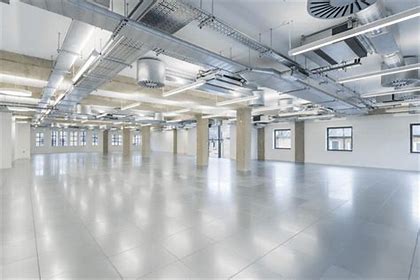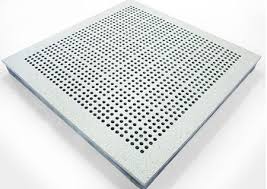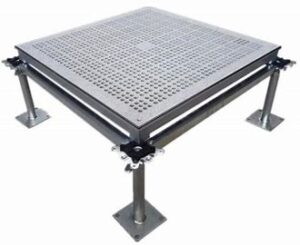How Raised Flooring Enhances Modern Office Design
Discover how raised flooring transforms modern office spaces, offering unparalleled flexibility, aesthetics, and functionality. This innovative solution supports sustainable design, enhances cable management, and maximizes space efficiency for a cutting-edge workspace. Explore the advantages of raised flooring in boosting productivity and creating a sleek, modern office environment.
How Raised Flooring Enhances Modern Office Design
Introduction
Modern office design demands versatility, style, and efficiency. Raised flooring has emerged as a revolutionary feature that aligns with these demands, blending seamlessly into contemporary workspaces. By providing hidden pathways for electrical systems, HVAC, and communication cables, raised flooring optimizes space utilization and improves functionality. This innovative system is not just about utility; it also brings aesthetic appeal, sustainability, and adaptability, making it an essential component for progressive office designs.
Key Benefits of Raised Flooring in Modern Offices
1. Optimized Space Utilization
Raised flooring allows for seamless integration of essential systems underfoot, freeing up visible office space. This design creates a clutter-free and organized environment conducive to productivity.
2. Enhanced Cable Management
With a raised flooring system, cables and wiring remain accessible yet concealed. This setup eliminates the need for unsightly cable trays and reduces tripping hazards, offering a safer and more professional workspace.
3. Improved Aesthetics
Modern raised flooring comes in various materials, textures, and finishes to complement any interior design. From sleek tiles to natural wood veneers, this flooring system enhances the office’s visual appeal.
4. Adaptability for Technological Upgrades
As technology evolves, offices often require system upgrades. Raised floors simplify this process, providing easy access to electrical and communication networks without major disruptions.
5. Sustainability and Energy Efficiency
Many raised flooring options are manufactured from recyclable materials, aligning with green building practices. Additionally, they can support efficient air distribution, reducing HVAC energy costs.
6. Acoustic Benefits
Raised floors with acoustic panels reduce noise, ensuring a quieter and more focused work environment—a critical feature for open office layouts.
Applications in Office Design
Open Plan Offices
Raised flooring helps manage the complexity of wiring and data systems in expansive open layouts while maintaining a streamlined aesthetic.
Meeting Rooms
The adaptability of raised flooring ensures that meeting rooms stay functional with hidden cable pathways and flexible power access.
Executive Spaces
Sophisticated flooring finishes elevate the look and feel of executive offices, blending functionality with premium design.
Coworking Spaces
Raised flooring supports dynamic work environments by accommodating diverse technological needs and frequent reconfigurations.
Specifications Table: How Raised Flooring Enhances Modern Office Design
| Feature | Specification |
|---|---|
| Material Options | Steel, aluminum, wood, calcium sulfate |
| Finish Types | Laminate, carpet, natural wood, tile |
| Height Adjustability | 4 inches to 24 inches |
| Weight Capacity | Up to 1500 lbs per panel |
| Panel Dimensions | 24” x 24” standard size |
| Cable Management System | Built-in pathways |
| Ventilation Support | Optional perforated panels |
| Fire Resistance | Complies with NFPA standards |
| Soundproofing | Acoustic underlays available |
| Sustainability | 50%-100% recyclable materials |
| Installation Time | 2-5 days depending on area size |
| Maintenance Requirements | Low; easy access for cleaning and repairs |
| Warranty | Typically 10-15 years |
| Cost Range | $25-$50 per square foot |
| Custom Design Options | Available for tailored office aesthetics |
Product FAQs
1. What is raised flooring?
Raised flooring is an elevated structural floor system with space beneath for utilities like cables, HVAC, and power systems.
2. How does raised flooring improve office aesthetics?
Raised flooring conceals wiring and integrates modern finishes, ensuring a clean and professional appearance.
3. Is raised flooring durable?
Yes, most raised floors are made from robust materials like steel or aluminum and are designed to support heavy office equipment.
4. Can I install raised flooring in an existing office?
Absolutely! Raised flooring can be retrofitted into existing spaces with minimal disruption.
5. Are there eco-friendly raised flooring options?
Yes, many manufacturers offer raised floors made from recycled or sustainable materials.
Why Choose Raised Flooring for Modern Office Design?
- Flexibility: Adapts to evolving technological and spatial needs.
- Sustainability: Supports eco-conscious office designs.
- Professional Aesthetics: Improves overall office presentation.
- Cost-Effective Maintenance: Simplifies system repairs and upgrades.
- Productivity Boost: Provides a clean, organized environment that enhances focus.
Pros and Cons Table: How Raised Flooring Enhances Modern Office Design
| Pros | Cons |
|---|---|
| Efficient cable and HVAC management | Initial installation cost can be high |
| Modern aesthetic appeal | May require professional installation |
| Flexibility for future office upgrades | Not suitable for all office layouts |
| Improves safety by concealing wiring | Regular cleaning under panels may be needed |
| Supports sustainable and energy-efficient design | Complex customization can increase cost |
|
|
|
|



